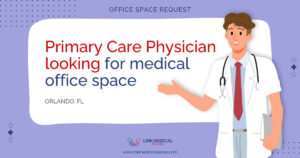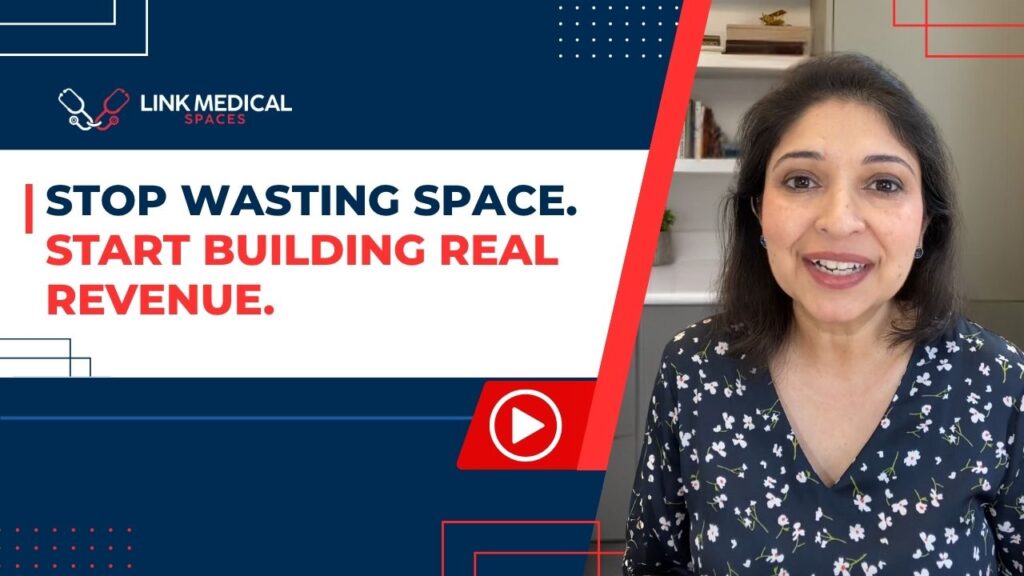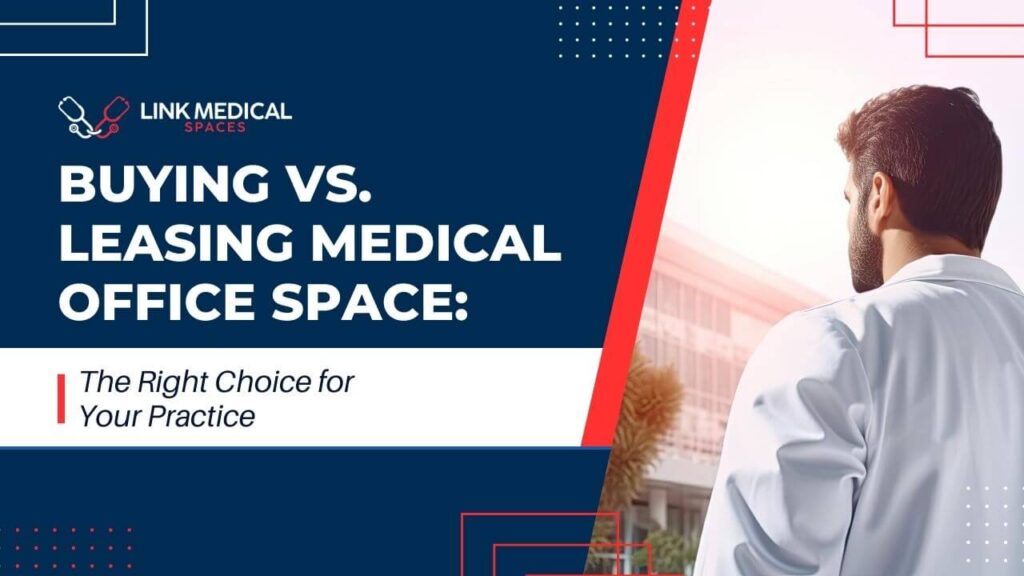Leasing medical office space is one of the most significant financial commitments a healthcare provider will make. A well-negotiated lease can help control costs, ensure flexibility, and protect your practice’s long-term success, while a poorly structured lease can lead to unexpected expenses, restrictive terms, and financial strain.
Understanding how to negotiate the best lease terms is critical—whether you’re a first-time tenant, renewing an existing lease, or expanding your practice. This guide will walk you through key negotiation strategies to help you secure a lease that works in your favor.
Negotiating Rent & Lease Term Flexibility
Rent is one of the largest expenses for any medical practice, and negotiating favorable terms can result in substantial long-term savings.
Key Factors to Consider:
✔ Lease Term Length:
- Short-term leases (3-5 years) provide flexibility, but landlords may offer fewer incentives.
- Long-term leases (7-10+ years) typically come with better rent rates and tenant improvement (TI) allowances.
- If committing to a long-term lease, negotiate early termination clauses in case your practice needs change.
✔ Rent Escalations:
- Most leases include annual rent increases (typically 2-5%).
- Try to negotiate fixed or capped increases to keep costs predictable.
- If the lease is NNN (Triple Net), clarify how tax and maintenance cost increases will be handled.
✔ Free Rent Periods:
- Many landlords offer 1-6 months of free rent to new tenants, especially for long-term leases.
- Free rent can help offset build-out or relocation expenses.
🔎 Pro Tip: Research local rental rates to ensure you’re getting a competitive deal. If the landlord’s asking rent is higher than market value, use this as leverage in negotiations.
Tenant Improvement Allowances (TIs) for Build-Outs
Medical offices often require customized build-outs to accommodate exam rooms, imaging equipment, additional plumbing, and ADA compliance. Build-outs can be expensive, and landlords often provide tenant improvement (TI) allowances to help cover costs.
Negotiation Strategies for TI Allowances:
✔ Request a Competitive TI Allowance:
- Landlords typically offer $30-$100 per square foot for medical office build-outs.
- Higher TI allowances are common in longer leases (7-10+ years).
✔ Negotiate Who Manages the Build-Out:
- Some landlords control construction and only reimburse tenants for approved costs.
- Others provide funds upfront but require tenant oversight. Clarify who has final say over renovations.
✔ Who Owns the Improvements?
- Some leases transfer ownership of tenant improvements to the landlord at lease expiration.
- If you invest heavily in custom build-outs, try negotiating the right to remove or repurpose improvements if you relocate.
🔎 Pro Tip: Don’t assume the first TI offer is final—counteroffer with higher build-out allowances or ask for rent abatement to offset improvement costs.
Securing an Exclusivity Clause to Prevent Competitor Encroachment
The last thing you want is for a competing practice to move into the same building, potentially siphoning off patients. An exclusivity clause prevents the landlord from leasing to direct competitors within the property.
How to Negotiate an Exclusivity Clause:
✔ Clearly Define Restricted Uses:
- If you’re a pediatrician, your exclusivity clause should prevent another pediatric or family medicine practice from moving in.
- If you run a physical therapy clinic, make sure no other rehab or orthopedic services can open nearby.
✔ Specify Location Scope:
- Exclusivity should apply to your building and adjacent properties owned by the same landlord.
- If in a medical office park, try extending exclusivity to the entire complex.
✔ Enforcement & Consequences:
- Ensure the lease includes penalties if the landlord violates the exclusivity clause (e.g., rent reduction or lease termination rights).
🔎 Pro Tip: If the landlord refuses full exclusivity, negotiate a “right of first refusal” on new vacancies—this gives you the chance to expand before a competitor moves in.
Assignment & Subletting Rights: Planning for Future Flexibility
Your practice needs may change—you might outgrow your space, relocate, or sell your business. Without proper lease provisions, you could be stuck paying for a space you no longer need.
Why Assignment & Subletting Rights Matter:
✔ Assignment Rights:
- Allows you to transfer your lease to another medical provider if you sell your practice.
- If your lease prohibits assignment, negotiate an exception for sales to licensed healthcare professionals.
✔ Subletting Rights:
- Subleasing can help offset costs if you downsize or relocate before your lease ends.
- Ensure sublease terms allow for renting to other medical providers without excessive landlord approval requirements.
🔎 Pro Tip: If the lease doesn’t permit assignment or subletting, request a “landlord approval” clause to retain flexibility.
Avoiding Hidden Costs: CAM Fees, Maintenance & Unexpected Expenses
Many tenants focus only on rent—but hidden expenses like maintenance fees, property taxes, and unexpected repair costs can significantly impact your bottom line.
Common Hidden Costs & How to Address Them:
✔ Common Area Maintenance (CAM) Fees:
- If leasing in a multi-tenant medical building, you’ll likely pay a share of lobby, hallway, and parking lot maintenance costs.
- Request a breakdown of CAM charges and negotiate caps on annual increases.
✔ Maintenance & Repairs:
- Who is responsible for HVAC repairs? Some leases make tenants cover these costly replacements.
- Ensure the lease clearly defines landlord vs. tenant responsibilities for roof, plumbing, electrical, and HVAC systems.
✔ Operating Expense Increases:
- If in a Triple Net (NNN) lease, negotiate a “cap” on tax and insurance cost increases to prevent unexpected rent hikes.
🔎 Pro Tip: Ask for the building’s maintenance history to spot potential repair risks before signing the lease.
Final Thoughts: Protect Your Practice with Smart Lease Negotiations
A well-structured lease can mean the difference between a thriving, financially stable practice and one weighed down by unnecessary costs and restrictions. Taking the time to negotiate the best terms upfront can save thousands of dollars and provide long-term stability.
Key Takeaways:
✔ Negotiate rent, lease length, and escalation caps to control costs.
✔ Secure a strong TI allowance to cover medical office build-outs.
✔ Protect your practice with an exclusivity clause to prevent direct competition.
✔ Include assignment & subletting rights to maintain flexibility.
✔ Understand and negotiate hidden costs to avoid surprise expenses.
Before signing any lease, consult with a healthcare real estate attorney or leasing expert to ensure your contract protects your financial and operational interests.
For more insights on medical office leasing, subleasing, and investment strategies, stay informed with Link Medical Spaces—your trusted resource for navigating healthcare real estate.














